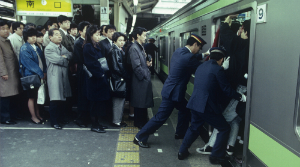 Dear readers, Catholic Online was de-platformed by Shopify for our pro-life beliefs. They shut down our Catholic Online, Catholic Online School, Prayer Candles, and Catholic Online Learning Resources essential faith tools serving over 1.4 million students and millions of families worldwide. Our founders, now in their 70's, just gave their entire life savings to protect this mission. But fewer than 2% of readers donate. If everyone gave just $5, the cost of a coffee, we could rebuild stronger and keep Catholic education free for all. Stand with us in faith. Thank you. Help Now >
Dear readers, Catholic Online was de-platformed by Shopify for our pro-life beliefs. They shut down our Catholic Online, Catholic Online School, Prayer Candles, and Catholic Online Learning Resources essential faith tools serving over 1.4 million students and millions of families worldwide. Our founders, now in their 70's, just gave their entire life savings to protect this mission. But fewer than 2% of readers donate. If everyone gave just $5, the cost of a coffee, we could rebuild stronger and keep Catholic education free for all. Stand with us in faith. Thank you. Help Now >
The cities are filling up! Where will the next two billion people live?
FREE Catholic Classes
How big can a city get? What happens when a city cannot house any more people? Experts warn that the world's cities are filling up, and soon mass migration will disrupt entire countries as people search for less crowded places to live.

Tokyo is so crowded that special workers cram people into the subway trains there.
Highlights
CALIFORNIA NETWORK (https://www.youtube.com/c/californianetwork)
1/24/2017 (8 years ago)
Published in Technology
Keywords: cities, population, density, planning, resilient
LOS ANGELES, CA (California Network) -- Cities are filling up around the world as populations range into the tens of millions. Shanghai is the world's largest city with 24 million souls. Manila has the highest population density with41,515 people per square kilometer living in an area of just 16 square miles.
What determines how large a city can become? Space is a factor, as well as water. A city must have enough water to quench the thirst of its people, and to satisfy cooking and bathing needs. Cities can grow tall when they run low on space, but this requires infrastructure to build as well as significant wealth. The population must be able to sustain itself in many other ways from paying rent to importing food, commuting, and more.
When one of these parameters reaches a tipping point, the city begins to plateau, and the surplus population begins to move in search of new places to live. This is apparent in expensive cities such as New York or San Francisco, where the lack of space has caused rents to skyrocket. Most people cannot live in these cities, so they are forced out. This creates a wandering population that seeks someplace else to go.
According to experts, the majority of the world's future migrants will gravitate towards medium sized cities.
This could be a problem because many smaller cities are not prepared for the influx of people they face.
Eugene Zapata Garesche, the Latin American and Caribbean Director of the 100 Resilient Cities project, warned that the world population would exceed 9.5 billion in 2075, and many smaller cities face an urbanization challenge they are not yet ready to meet.
The 100 Resilient Cities project is funded by the Rockefeller Foundation, and it advises city leaders to appoint planners who will deal with future challenges.
Specifically, medium cities should build high capacity infrastructure. Wide roads, high capacity systems, waste management, and water supplies are all among the things that planners need to take into account. They need to understand that in the future, small, basic or cheap systems may get the job done now, but will have to be redone in a generation or two. Such upgrades may not always be possible in the future.
Getting people to think about their future will help them to plan cities that can grow with their populations. A refusal to take these challenges into account could make the difference between a beautiful city and one that is difficult to survive in.
Subscribe Now - Catholic Online YouTube
---
The California Network is the Next Wave in delivery of information and entertainment on pop culture, social trends, lifestyle, entertainment, news, politics and economics. We are hyper-focused on one audience, YOU, the connected generation. JOIN US AS WE REDEFINE AND REVOLUTIONIZE THE EVER-CHANGING MEDIA LANDSCAPE.
Join the Movement
When you sign up below, you don't just join an email list - you're joining an entire movement for Free world class Catholic education.
- Advent / Christmas
- 7 Morning Prayers
- Mysteries of the Rosary
- Litany of the Bl. Virgin Mary
- Popular Saints
- Popular Prayers
- Female Saints
- Saint Feast Days by Month
- Stations of the Cross
- St. Francis of Assisi
- St. Michael the Archangel
- The Apostles' Creed
- Unfailing Prayer to St. Anthony
- Pray the Rosary
![]()
Copyright 2025 Catholic Online. All materials contained on this site, whether written, audible or visual are the exclusive property of Catholic Online and are protected under U.S. and International copyright laws, © Copyright 2025 Catholic Online. Any unauthorized use, without prior written consent of Catholic Online is strictly forbidden and prohibited.
Catholic Online is a Project of Your Catholic Voice Foundation, a Not-for-Profit Corporation. Your Catholic Voice Foundation has been granted a recognition of tax exemption under Section 501(c)(3) of the Internal Revenue Code. Federal Tax Identification Number: 81-0596847. Your gift is tax-deductible as allowed by law.








